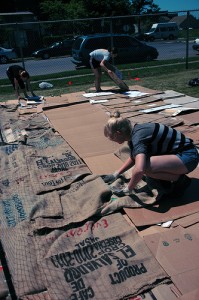I heard an analogy recently that “Pressure treatment is to wood what embalming is to humans.” If that analogy is accurate (and I think it is), it’s all we need to know to understand the dangers of using pressure treated (PT) wood. Pumping toxic chemicals into wood–or into bodies–to extend the preservation lifetime has negative effects on the environment those chemicals will eventually come in contact with, not to mention health effects associated with workers handling such toxic chemicals.
But . . . you have a porch to build. And now you don’t want to use PT lumber? Luckily there are many alternatives. Below is not a 100% complete list, but only a quick and dirty list of what’s available these days . . .
Pressure-treated minus toxic chemicals
Kebony
The kebonization process soaks wood in a specific alcohol that is a waste byproduct from sugar cane and the alcohol functions as a resin that guards the cell structure of the wood. Unlike PT lumber, there are no precautions beyond normal to work with this wood or to handle clean up.
Accoya
Very similar to Kebony, but instead of using a byproduct of cane sugar, acetic acid is used. The process of acetylization transforms the cell structure of the wood so that it is does not shrink or expand a lot and is thus minimally affected by changes in moisture levels. The company argues that this feature makes Accoya more dimensionally stable than conventionally pressure-treated wood.
Glass fortified lumber
Lumber infused with sodium silicate (liquid glass) and heated up so it forms a glass-like cell structure, protecting the wood from fire, rot and insect damage. The process increases the strength and hardness of the wood and is good for ground contact applications.


